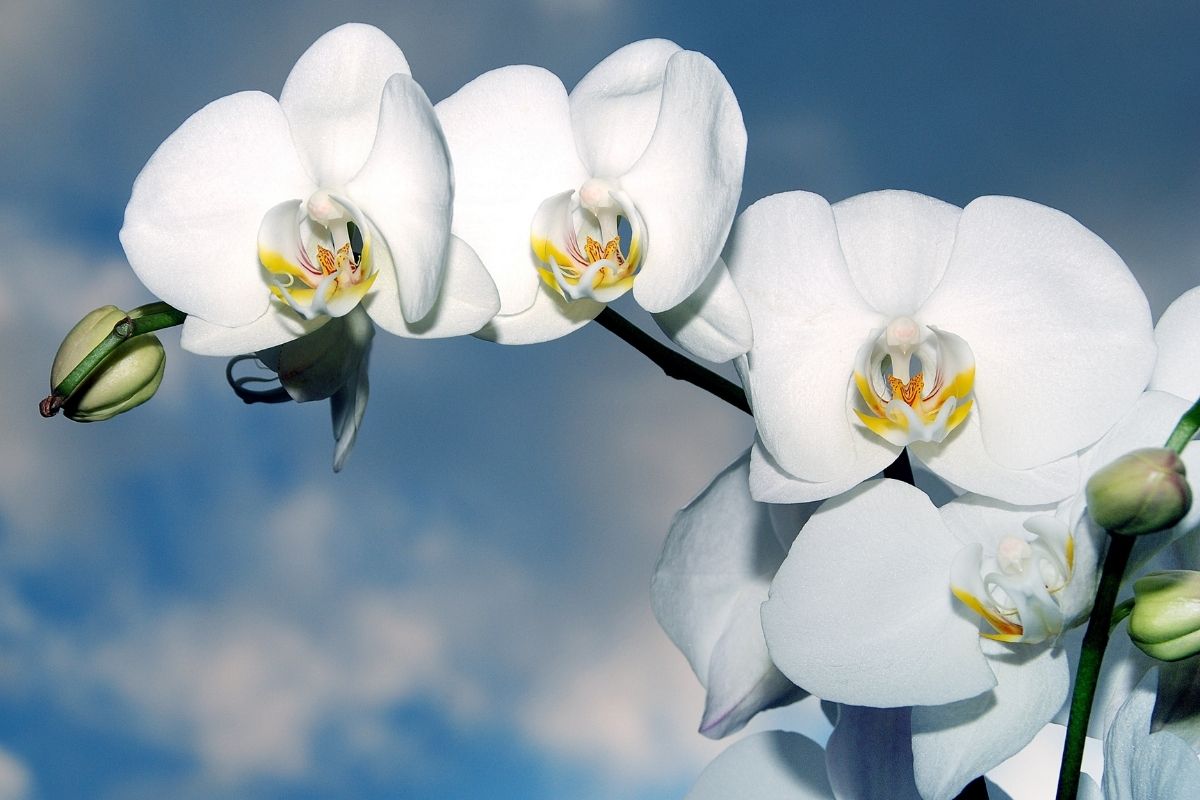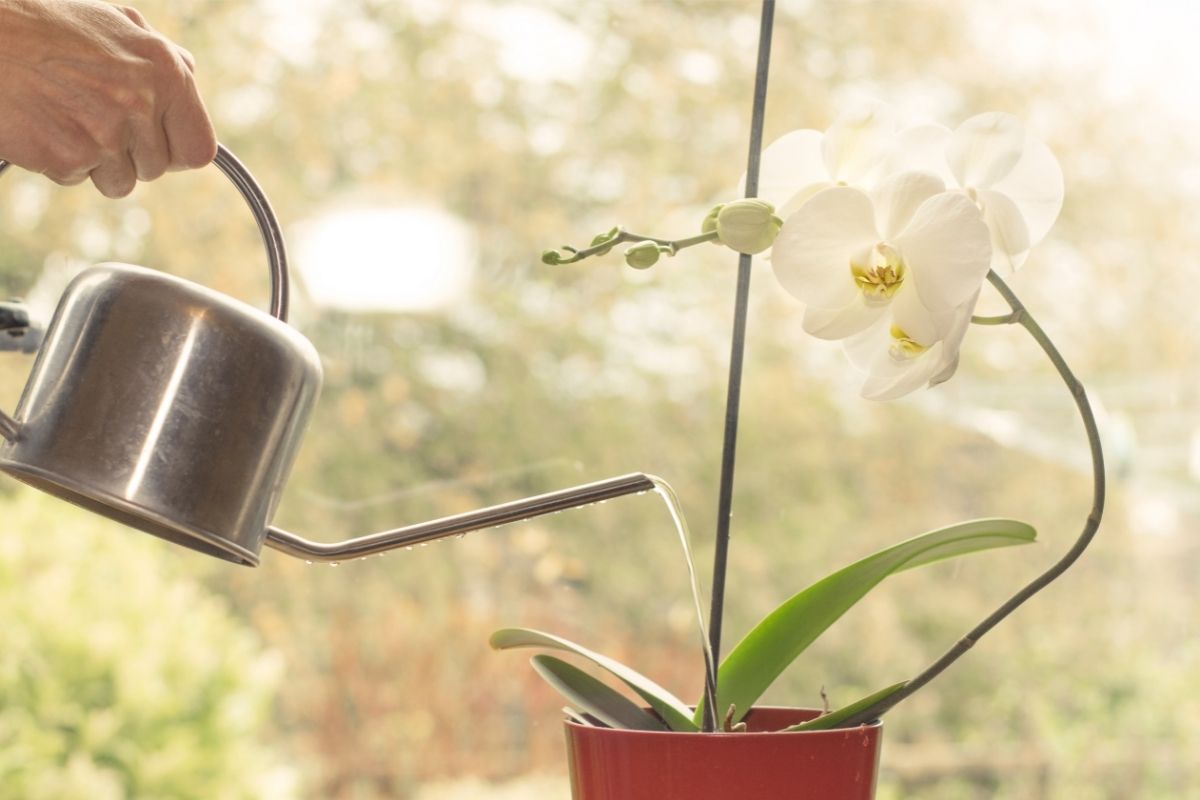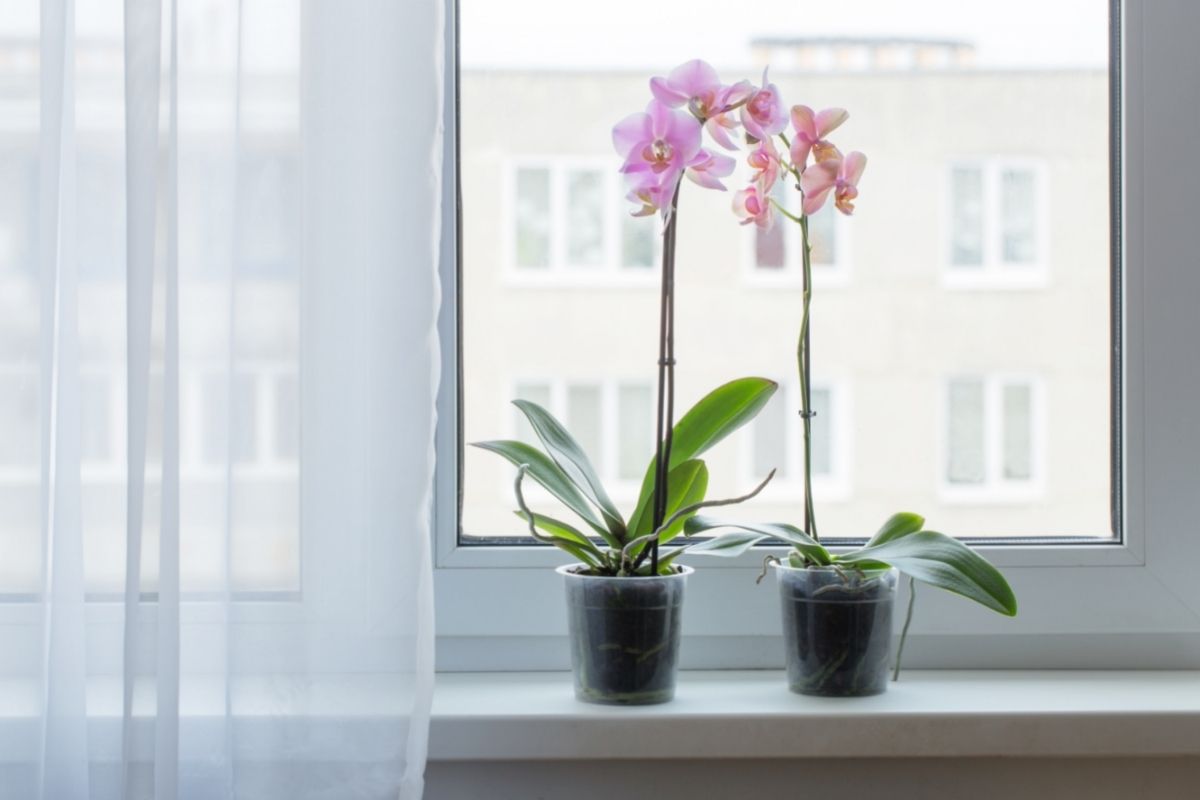Orchids are some of the most beautiful flowers out there. They are exotic and so charming with their lush foliage and vibrant flowers. In this article, know about getting an orchid to bloom again.
These plants come from all around the world, including tropical areas such as Hawaii, Malaysia, Indonesia, and Mexico.
Even though they’re a hardy plant, they still have the ability to be damaged by poor growing conditions, pests and disease.
While all orchids are not created equal when it comes to care, these tips should help them bloom more often in an easier way.
These beautiful plants can have flowers of all kinds of colors, including white, blue, purple, pink, red, orange, yellow, mauve, lavender and even black.
You can also find ones that grow on stalks instead of being rooted in the ground (called epiphytes).

Some types of orchids look almost like tree ferns and other types of ferns because of their large leaves, while others look like grass tufts because of their narrow leaves.
Some almost look like trees due to their amazing sizes. While the majority of orchids will reach heights of about 12 inches to 4 feet tall, some can reach heights of 25 feet.
Other types of orchids can weigh several thousand pounds.
Related: Bring Your Orchid Back to Life! How to Revive an Orchid Plant
Orchid Information
There are a number of incredibly popular orchids. These include slipper orchids, moth orchids, dendrobium, boat, and dancing lady orchids.
While these are all different and have different appearances, many of these plants have the same needs and preferences.
Most orchids have green leaves, but the shapes of these leaves can vary from one plant to another.
Sunshine
Most orchids do really well when they get a lot of bright light. This light should be indirect, as direct light can easily burn them.
They like places where there is plenty of bright sunlight, like east or south facing windows. If you don’t have an appropriate spot for your plant, you should invest in a grow light to help it stay healthy.
Watering

Orchids can typically be watered twice a week in the summer, and once a week in the winter. However, you need to be sure that you do not overwater your plant.
You should always do some research on the type of orchid you have to find out how often it should be watered and whether the soil should dry out or not.
Some orchids, like oncidiums and cattleyas, like their soil to completely dry out between waterings.
On the other hand, there are plants like the paphiopedilums and phalaenopsis orchids that should always have slightly moist soil.
Always find out as much as you can about your specific plant to see what is best for it.
You can usually tell if you are watering too much or too little by looking at the roots of the plant.
Green roots indicate that the plant is getting the perfect amount of water, while white or gray roots indicate too little water.
If the roots of your orchid are brown and soggy, you are giving the plant too much water. An excess of water could lead to root rot, a fungal infection. If your plant suffers from root rot, it could die.
Related: 9 Black Orchids Varieties (with Pictures and Care Guide)
Fertilizer
Balanced fertilizers will do most orchids a world of good. Once again, you should find out more about your specific type of orchid so that you can properly care for it.
If you are in a rush, a 20:20:20 fertilizer with all the “necessary trace elements” will be a good option.
Any fertilizer you choose should not contain urea, as these plants do not do well with it. Remember, orchids will do better with too little fertilizer rather than getting too much.
Potting Medium
Most orchids will do well with potting mediums that include perlite, tree fern, sphagnum peat, diatomite, sphagnum moss, or coconut husk chips.
However, since there are so many types of orchids with different preferences, this is also a factor that should be researched in order to ensure your plant is happy and healthy.
Depending on the orchid you have, you may need well-draining potting mix, or one that can hold some water.
However, no matter the potting mix, you should have drainage holes and a way for excess water to escape.
Getting Orchids To Rebloom

If you recently bought your orchid, it was likely already blooming. When it has finished blooming, it will become dormant, which might make you think it’s dead.
When this happens, your plant is just resting in preparation for blooming again, and it is replacing nutrients. Although this period can last a long time (anywhere between 6-9 months), it is necessary.
Don’t give up hope if you think your plant is dead after it has finished blooming, it simply needs time to regain energy.
Although most orchids have no problems blooming again, there are some that may need some extra help.
Some plants may need to be fertilized when they are dormant, or they should be in a cooler spot in the house. However, you still need to ensure that the plant gets indirect sunlight at all times.
Fertilize During The Orchid’s Period Of Dormancy
As we just mentioned, you might need to fertilize your orchid as it becomes dormant to help it bloom again.
Use a balanced 20:20:20 formula and give the plant small amounts of fertilizer as often as your specific plant’s instructions state.
Once again, make sure that the fertilizer you use has little or no urea in it.
Move It To A Cool Spot
When your orchid becomes dormant, moving it to an area where the temperatures stay between 55-65 degrees Fahrenheit will help it.
When you do this, make sure that it still gets plenty of bright, indirect sunlight. By doing this, when the time comes for it to bloom again (in the Fall, usually), it will be ready to do so.
If you notice that your plant hasn’t grown much after you moved it, it might not be getting enough light.
Try moving the orchid to a different spot to see if it improves matters. Try to still pick a cooler location.
Support The Plant

If your orchid is doing well at this point, it should be growing a new spike. You can help your plant along by supporting this new flower spike with a stake.
By doing this, you are ensuring that the plant doesn’t have to use too much energy to keep the new growth attached, so there is less chance of it breaking or getting damaged.
Why Your Orchid Won’t Rebloom
There are some common reasons as to why your orchid isn’t reblooming. Fortunately, most of these problems can be fixed relatively easily.
We will go through the common issues and what you can do to combat them.
Seasons
Orchids are one of the few plants that like to flower in the fall. If you want your orchids to bloom in the spring and summer with the rest of the flowers, you will need to pay a lot of attention to your plant and make sure the environment is perfect for it.
Improper Lighting
Both too much and too little light will cause your orchid to stop blooming. These plants need indirect sunlight, and if you cannot give that to them, get a grow light.
Too much light will cause the leaves of the orchid to burn, and the plant can die. If you need to use a grow light, make sure that you use the timer setting to replicate the natural light.
Improper Watering
Under and overwatering will also play a role in whether your orchid blooms or not. If the leaves of your plant start wilting, or the roots turn brown and soggy, you are overwatering.
Dry looking leaves and roots are an indication that you are not giving your orchid enough water.
In either of these situations, the orchid will not be happy, and growth will be stunted. If the issue continues for long enough, the plant could also die.
Temperatures
Orchids like temperatures between 65-75 degrees Fahrenheit. Severe weather changes will have a detrimental effect on the plant.
Make sure that your orchid stays indoors at all times, and try to regulate the temperature to keep it happy.
Repotting
When you notice that your orchid is outgrowing its pot, you should repot it. The roots of orchids can begin to suffocate when they do not get enough ventilation.
You can tell when your plant needs to be repotted by looking at its roots – when they are creeping from the pot and brown, the time has come to repot the plant.
Fertilizer

Your orchid needs nutrients in order to grow and bloom. Always make sure that your plant has enough nutrients, rather than sterile potting mix.
If you think that your plant needs a nutrient boost, use a urea free, balanced fertilizer.
Final Thoughts
Orchids make fantastic houseplants. They are relatively easy to care for, especially when you know what to look out for, and have some of the most stunning flowers.
Although some people struggle to maintain these plants, they can actually be really easy to grow as long as you give them the right amount of water and sunlight.
If you have orchids, what do you think of them? Are they easy to care for, or are they more challenging? If you don’t have an orchid plant, why not? Take a chance and get one of these beauties!
Frequently Asked Questions
Do Orchids Like Indirect Light?
Yes, orchids prefer indirect light. Direct sunlight can burn the plant’s leaves.
Are Orchids A Tropical Plant?
Most orchids are tropical plants, but some come from semidesert regions.
How Big Should An Orchid Pot Be?
Most orchids do well in pots that are between 4-6 inches in diameter. Larger orchids may need larger pots of 8 inches or larger.
Should Orchids Be In Direct Sunlight?
No. Orchids should not be in direct sunlight or else their leaves will burn.
What Time Of The Year Does An Orchid Bloom?
Most orchids bloom in the fall. However, some species of orchids can bloom twice a year.
Do Orchids Do Well With Artificial Lights?
Yes. Orchids will do well with artificial or grow lights if you cannot give them enough natural light.
How Long Will My Orchid’s Dormant Phase Last?
The dormant period for most orchids last between 6-9 months. However, sometimes the dormant period will last longer or shorter depending on the type of orchid you have and the environment.
Do Orchids Like Cooler Temperatures?
Orchids do well in temperatures between 65-75 degrees Fahrenheit.
What Orchid Fertilizer Should I Use?
Use a balanced, urea free fertilizer for your orchid.
What Does A Healthy Orchid Look Like?

A healthy orchid will have green leaves and green roots. Depending on the time of year, they may also be in the blooming process, or in another part of their bloom cycle.
Should I Water My Orchid With Cold Water?
No. Using room temperature water is the best choice for your orchid.
Can Orchids Survive A Drop In Temperature?
As long as no frost forms on your orchid’s leaves, your plant will be fine if temperatures drop.
Do Orchid Pots Need A Drainage Hole?
Yes, excess water needs to be able to drain from the potting mix to avoid root rot.
Should I Use A Humidity Tray For My Orchid?
You can use a humidity tray for your orchid to help stop the plant from drying out.
What Does A Dormant Orchid Look Like?
A dormant orchid may look like it’s dead, but it isn’t!
Should I Keep My Orchid Indoors?
Yes, orchids should be kept indoors to help temperatures stay consistent. If your orchid gets frosty, a lot of damage could be done and the plant could die.
What Is An Orchid’s Ideal Temperature?
Any temperatures between 65-75 degrees Fahrenheit will be good for an orchid, though this could vary depending on the type of orchid you have.
What Light Conditions Do Orchids Like?
Orchids like light conditions that are bright but indirect.
Editor’s Recommendations
19 Different Types Of Brown Plants (Including Photos)







